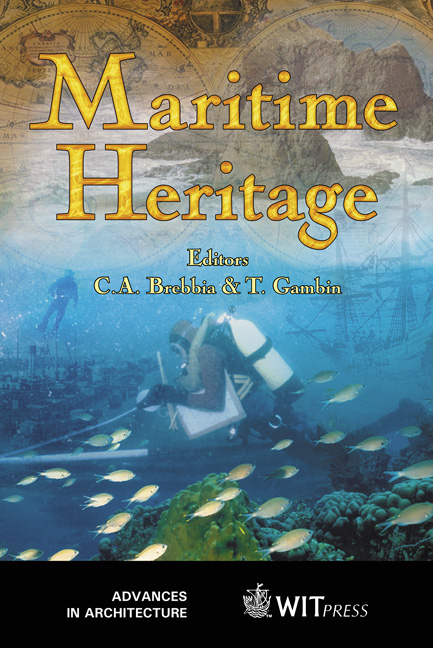The Sulphur Threat To The 17th Century Warship Vasa
Price
Free (open access)
Transaction
Volume
65
Pages
8
Published
2003
Size
390.03 kb
Paper DOI
10.2495/MH030161
Copyright
WIT Press
Author(s)
I. Hall Roth & L. Dal
Abstract
The sulphur threat to the 17'~ century warship Vasa I. Hall Roth & L. Dal National Maritime Museums, Sweden Abstract The royal warship Vasa sank on her maiden voyage in 1628. She was discovered in 1956 and in 1961, after 333 years at the bottom of the sea in the Stockholm harbour she was salvaged. Vasa, built mainly of oak, was one of the first major objects to be conserved with polyethylene glycol. She was sprayed continuously for 17 years followed by an 11 year long controlled drying procedure (HBfors, [I]). In 1990 the new Vasa museum opened and is now the most visited museum in Scandinavia with about 750 000 visitors each year. The summer of 2000 was unusually wet and in July, yellow-white precipitate was discovered on wooden surfaces on objects kept in the storage, in showcases and later on the ship itself. An international seminar was held in February 2001 and as a result a research programme was launched that involves scientists from Australia, Canada and Sweden. Surface as well as cor
Keywords





